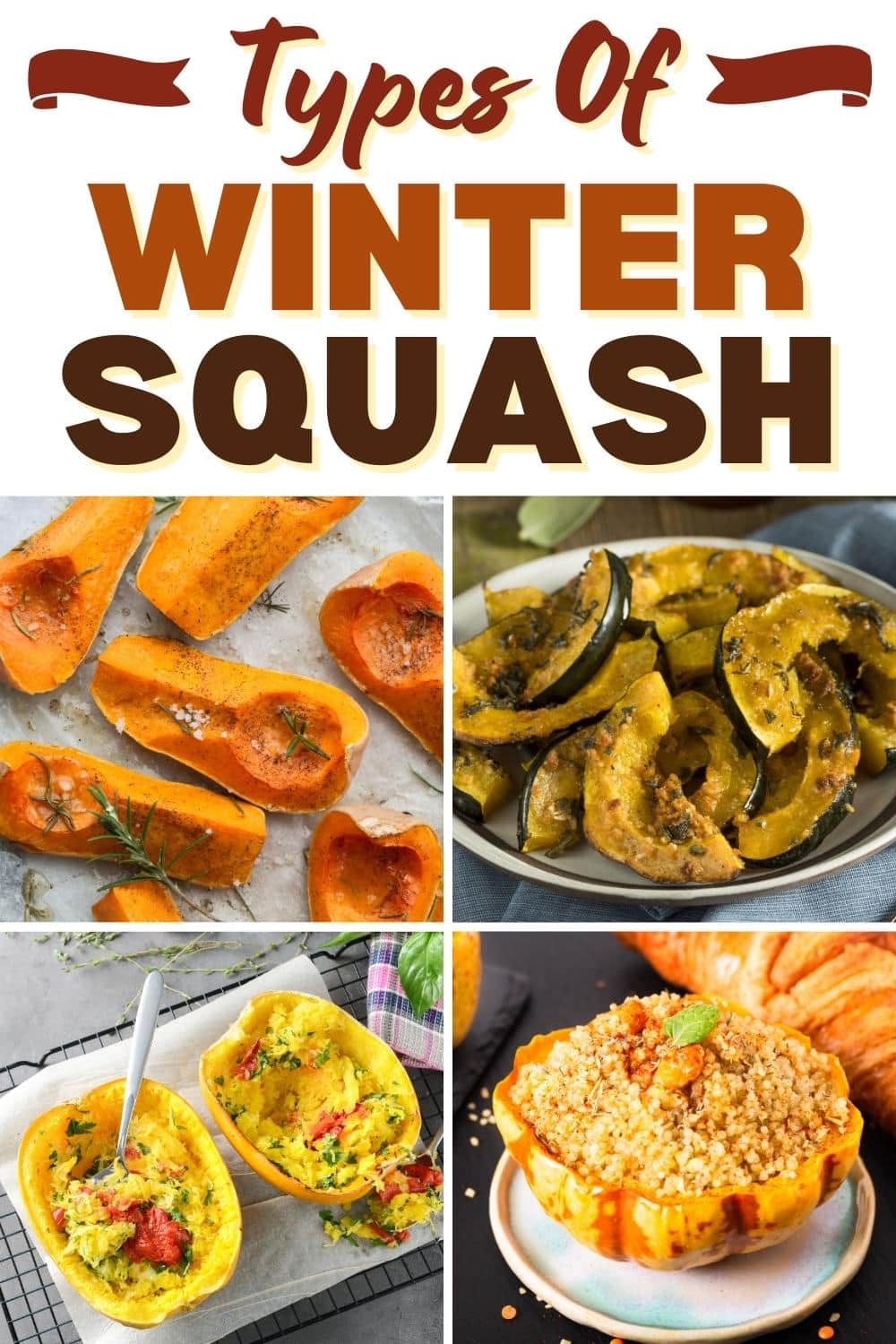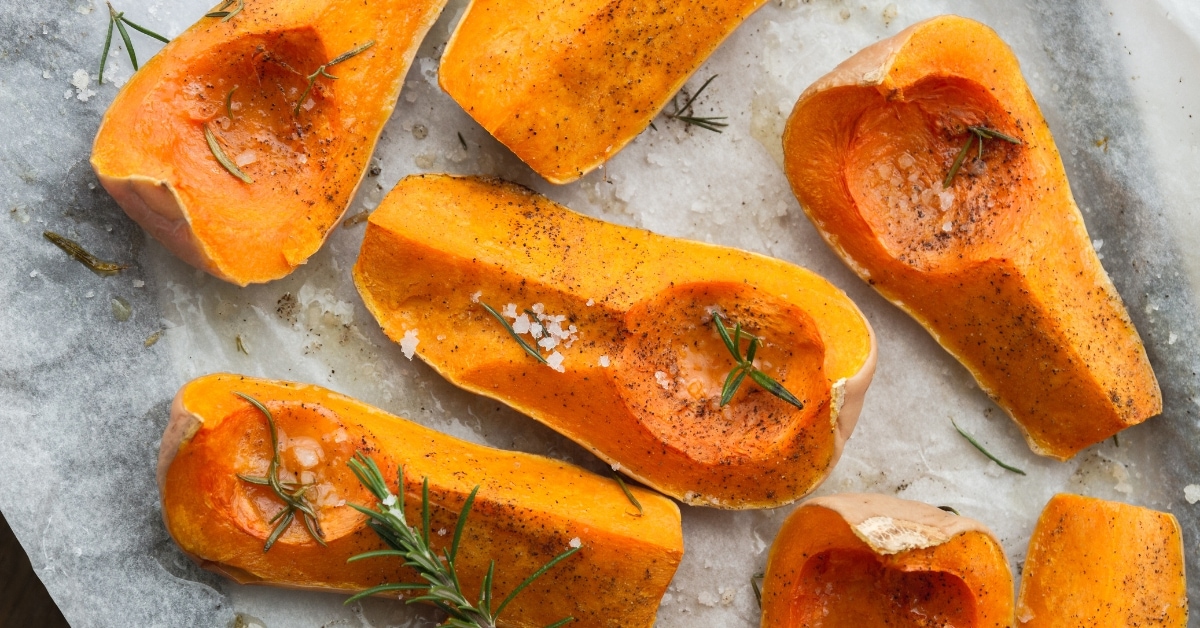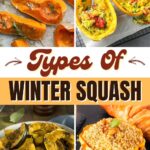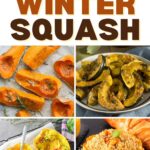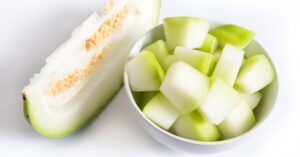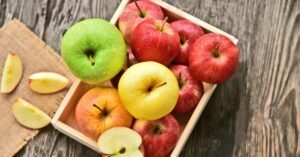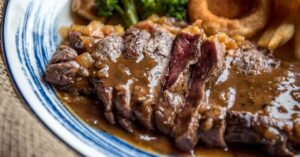Wondering what the differences are between the types of winter squash? You’ve come to the right place.
With winter upon us, squash is back in season. And this fruit has an astounding amount of different varieties.
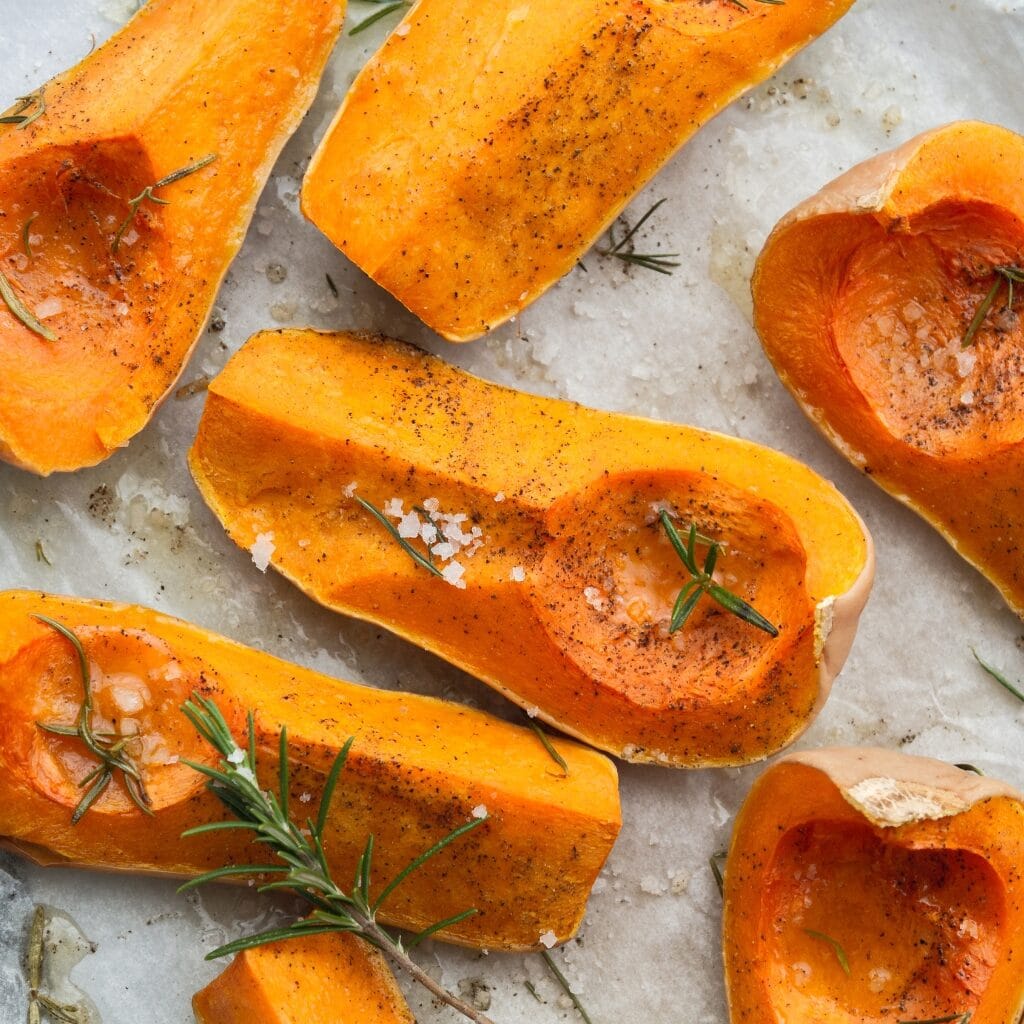
Acorn, turban, and mashed potato squash are just a few. Each one has a distinct flavor to elevate your wintery meals.
They’re a fantastic addition to soups, stews, chilis, casseroles, baked goods, and more.
From the popular butternut to the lesser-known buttercup, you’ll learn all about the types of winter squash.
So sharpen your chef’s knife, you’ll need it.
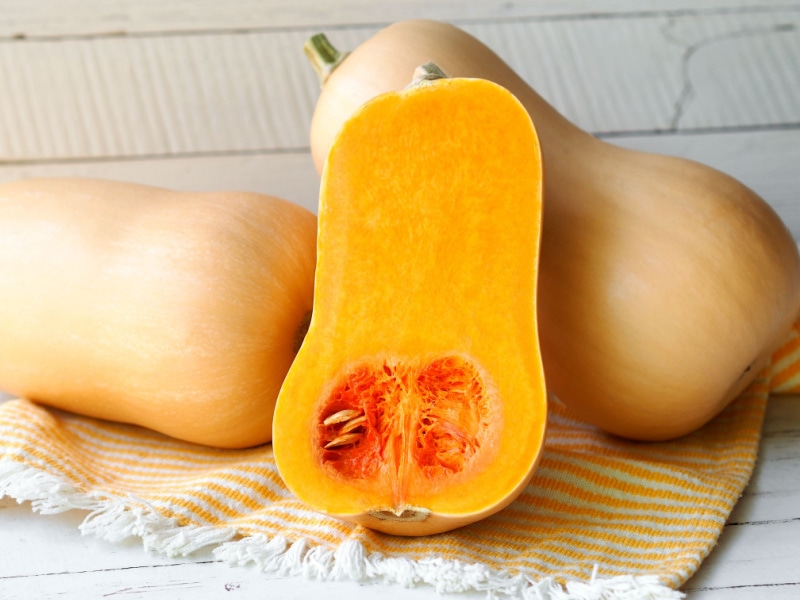
1. Butternut Squash
I’m sure you’re no stranger to butternut squash.
This popular winter squash is a favorite for soups, stews, pasta, salads, and more.
From the peel to the seeds, every part is edible.
When slicing into this hardy squash, you want to wield a sharp knife. Cutting it in half can be quite a challenge.
I find it works best to cut right where the neck meets the bulbous part.
Once you do, your reward is the sweet bright orange flesh.
Roasted, baked, sauteed, or pureed, there are many ways to prepare it.
My favorite butternut squash recipe, though, is this soup. It’s easy, tasty, and perfect on a chilly day.
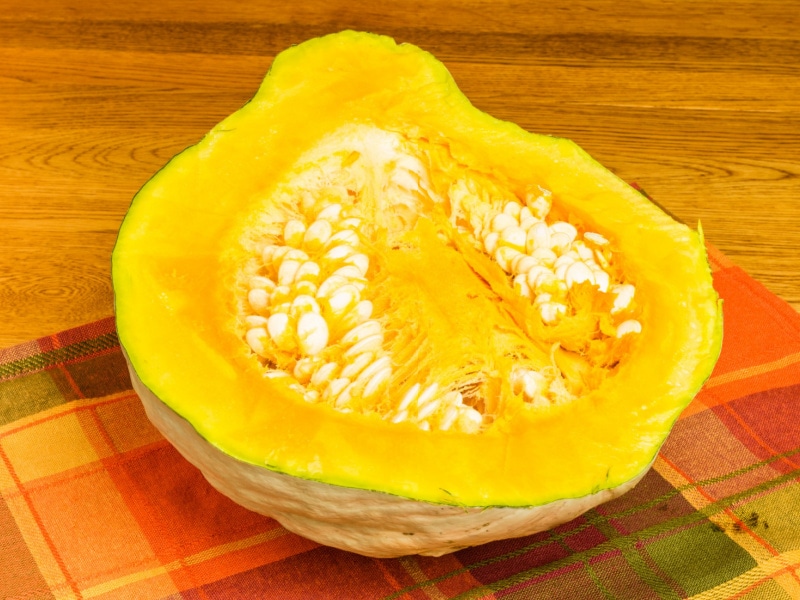
2. Hubbard Squash
Hubbard squash stands out with its bumpy skin and grayish-blue color. It’s also one of the largest winter squash varieties.
Native to the Caribbean, this squash can get up to 50 pounds!
Like others, the skin is thick. Cut it open and you’ll find a yellowish-orange flesh.
It has a rich taste that’s akin to pumpkin. Like pumpkin, it’s also very versatile.
Some of the best Hubbard squash recipes include cornbread stuffing, muffins, and lasagna roll-ups.
If you’ve never had it though, I recommend simply roasting slices.
That way, you can appreciate the flavor without any distractions.
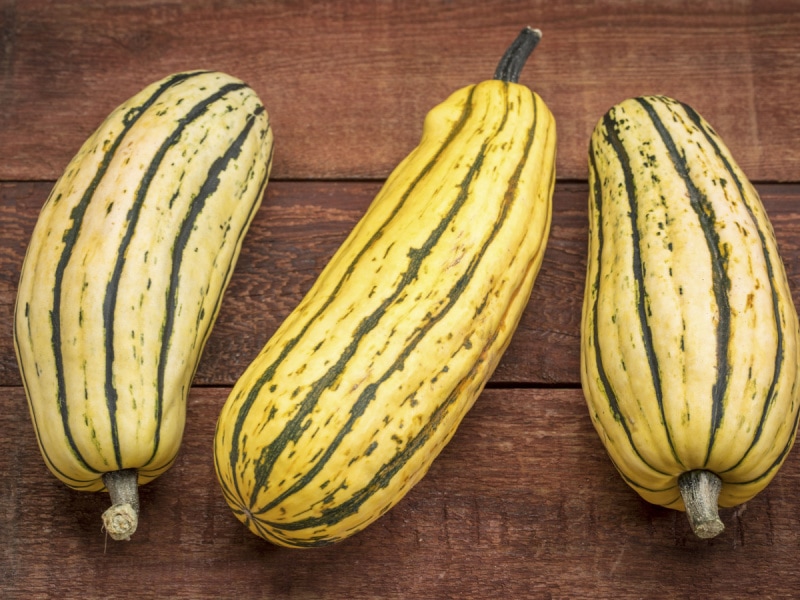
3. Delicata Squash
Delicata squash is oblong-shaped with a yellow peel and green stripes.
The orange flesh sort of tastes like a sweet potato, which is why you may know it by another name, sweet potato squash.
Other names include Bohemian squash and peanut squash.
It’s in season from late summer to early winter. So you have some time to pick a few up.
There are plenty of ways to prepare it. However, roasting is the most common.
For a tasty delicata squash recipe the whole family will love, slice it into wedges and make fries.
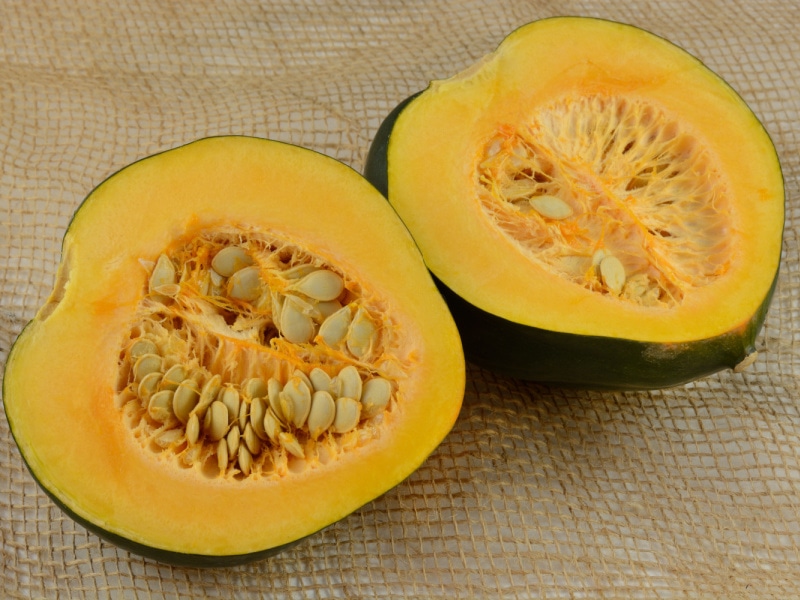
4. Acorn Squash
If only one squash was meant for stuffing, it’s acorn squash. The small size makes it perfect for individual servings.
The flesh is sweet and slightly nutty. So it presents a terrific contrast to savory ingredients.
I love packing it with wild rice, goat cheese, and cranberries for a vegetarian Thanksgiving option.
You can also roast, steam, braise, or puree it.
The grooves can make it a little hard to peel. Luckily, the orange and green skin is edible.
Aside from all the scrumptious uses, acorn squash is highly nutritious. It’s packed with vitamin C, vitamin B, and fiber.
Store it in a cool dry place and it should keep for a month.

5. Banana Squash
Banana squash earned its name from its long cylindrical shape and pale yellow skin.
But you won’t always find it yellow. It can be pink, orange, and even blue.
It has a storage life of up to 6 months, which is pretty long.
That’s not the only thing about it, though. Banana squash is massive! It can grow up to 3 feet.
That means you’ll have plenty of squash for all your banana squash recipes.
The best cooking method is to slice the squash in half. Then, place it cut side down on a baking dish and bake it.
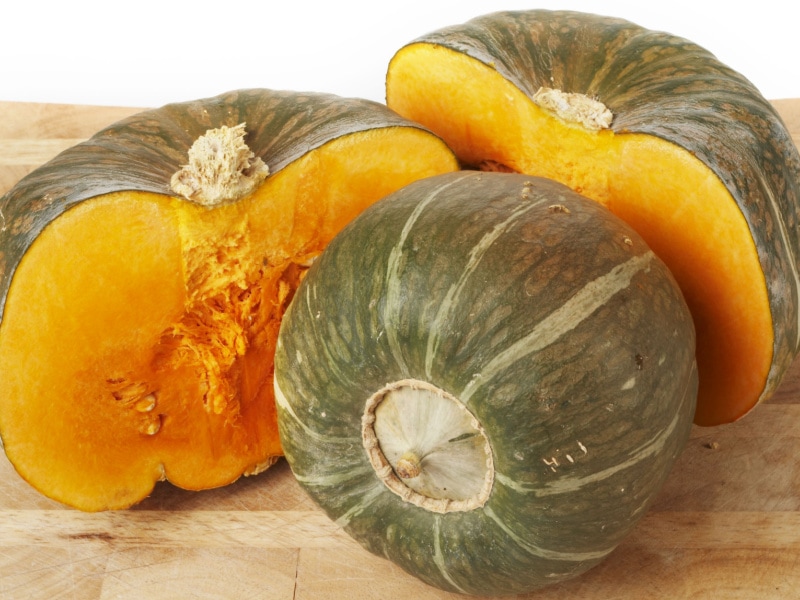
6. Buttercup Squash
Baked, roasted, stuffed, pureed, or mashed, buttercup squash is great any way you prepare it.
This stubby squash has dark green skin with lighter green stripes and orange flesh.
You can tell it apart from kabocha squash by the signature round ridge bottom.
Unlike other squash varieties, you don’t want to eat the skin.
If you don’t feel like busting out the peeler, roast the squash first then remove the rind.
It’s in season from fall through winter. Pick a few up and you can keep them for up to three months.
When selecting ripe squash, pick one out that’s firm with even coloring.
The sweet creamy flesh goes well with proteins.
But the uses for buttercup squash don’t stop there.
It’s sensational in Thai soup and delectable as a sweet crumble bar.
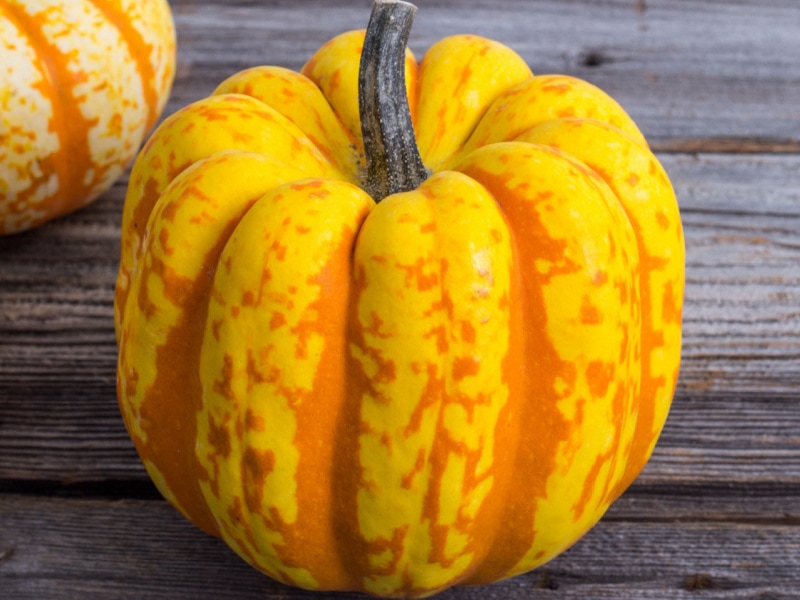
7. Carnival Squash
During winter squash season, you’ve no doubt seen carnival squash at the market.
It looks sort of like a dumpling squash and kind of like an acorn squash. The defining characteristic is its lovely coloration.
This small squash has a colorful striped rind that’s orange, white, yellow, and green. Hiding inside is a mildly sweet yellow flesh.
There are plenty of ways to incorporate carnival squash into your meals.
Roast it with balsamic, double-bake it with shallots, or stuff it with turkey. When in doubt, turn it into soup.
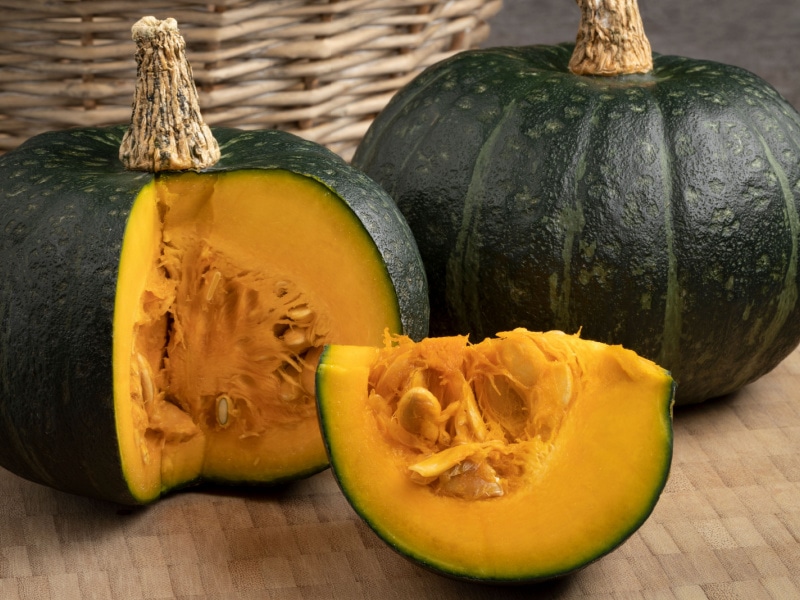
8. Green Kabocha Squash
Also known as Japanese pumpkin, kabocha squash sort of looks like buttercup squash.
This isn’t too much of a surprise since they’re both a Cucurbita maxima variety.
It’s short and round with a hard dark green rind.
Meanwhile, inside is a bright orange flesh with a sweet and nutty flavor.
Many describe it as tasting like sweet potato and pumpkin.
So I’m sure you’re already conjuring up a bunch of green kabocha squash ideas.
From soups to curries and tempura to dumplings, you’ll love cooking with this squash.
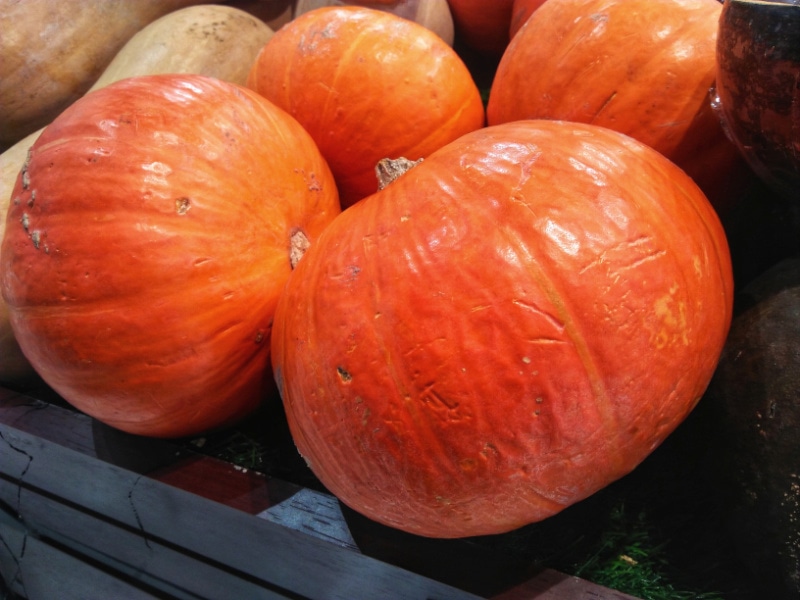
9. Red Kabocha Squash
Not all kabocha squash is green. Take, for instance, red kabocha squash.
Due to its shape and color, it looks sort of like a pumpkin.
Just like the green variety, it’s squat. The difference is it has a vibrant red-orange rind. It also has a sweeter flavor.
Besides the delicious taste, red kabocha squash offers plenty of nutritional benefits.
It’s good for your eyes, skin, and even your heart. It’s also packed with vitamin A and vitamin C.
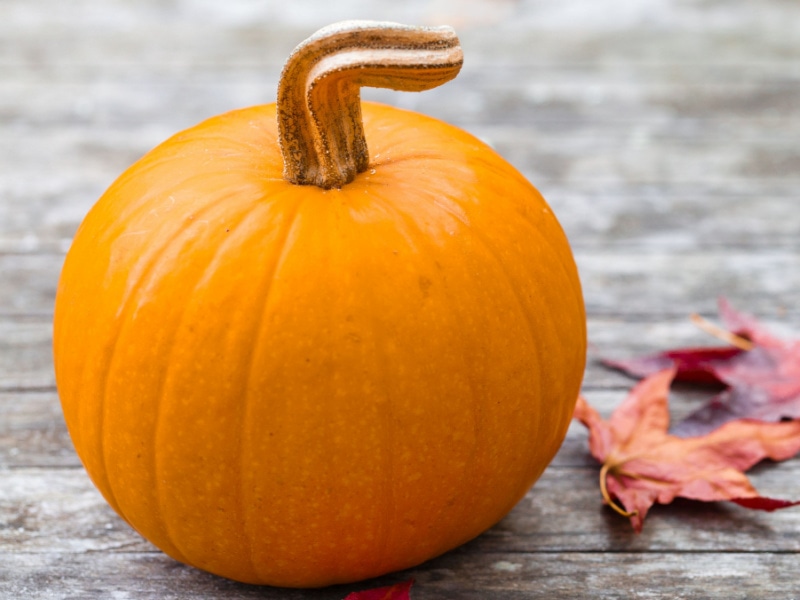
10. Sugar Pumpkin
Sugar pumpkins need no introduction. Come fall, this bright orange squash is on everyone’s mind.
This is the pumpkin variety you use for baking rather than carving.
Although, this cutesy small round pumpkin does look great as a festive centerpiece.
As the name suggests, the flesh is sweet. It’s also a bit earthy.
From muffins to cinnamon rolls, you can use them for all your pumpkin baked goods.
Of course, you can’t beat a classic pumpkin pie.

11. Mashed Potato Squash
I know what you’re thinking, and no. Mashed potato squash isn’t just squash mashed up like our favorite buttery spuds.
Although, it would taste delicious!
Also known as white squash, mashed potato squash has creamy-colored skin.
The shape can either be oval or more like acorn squash.
The flesh is somewhat sweet with a semi-starchy texture. So yes, you can turn it into mashed potatoes if you want.
You can also roast, bake, steam, and puree it.
For a fun twist, try it as a pumpkin replacement in your baked goods.
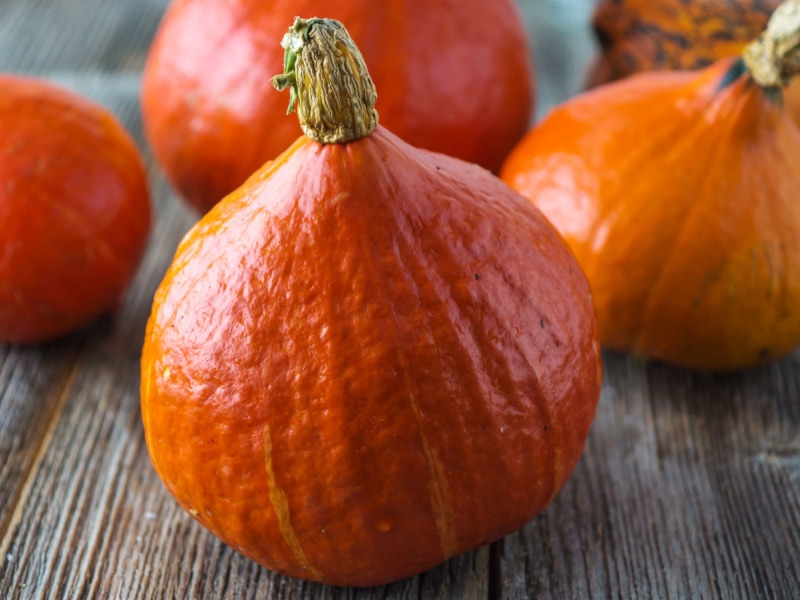
12. Red Kuri Squash
Red kuri squash tastes as distinctive as it looks. It has a teardrop shape with bright orangish-red skin.
As for the flavor, it tastes somewhat sweet and nutty like a chestnut.
Also referred to as orange Hokkaido pumpkin, red kuri squash is very nutritious. It’s packed with vitamins, iron, and potassium.
It’s fantastic in soups and curries. You can also branch out and get creative.
Turn it into a tart or toss it in your baked ziti. There are plenty of fun red kuri squash recipes to choose from.

13. Spaghetti Squash
Anyone who’s covered spaghetti squash in marinara knows it’s a prime low-cal pasta substitute.
The flesh is stringy, sort of like spaghetti. While the flavor is exquisite, it’s mild with a slightly chewy texture.
The squash itself is cylindrical with smooth yellow skin.
The best time to find this winter squash is from late fall through the winter.
It keeps for about a month, so you have some time to use it up.
Eat a serving of this squash, and you’ll reap the nutritional benefits. It has antioxidants, vitamin C, and fiber.
If you’re looking for some creative spaghetti squash recipe, I’ve got plenty.
I’ve even got a whole post for anyone wondering what to serve with spaghetti squash.
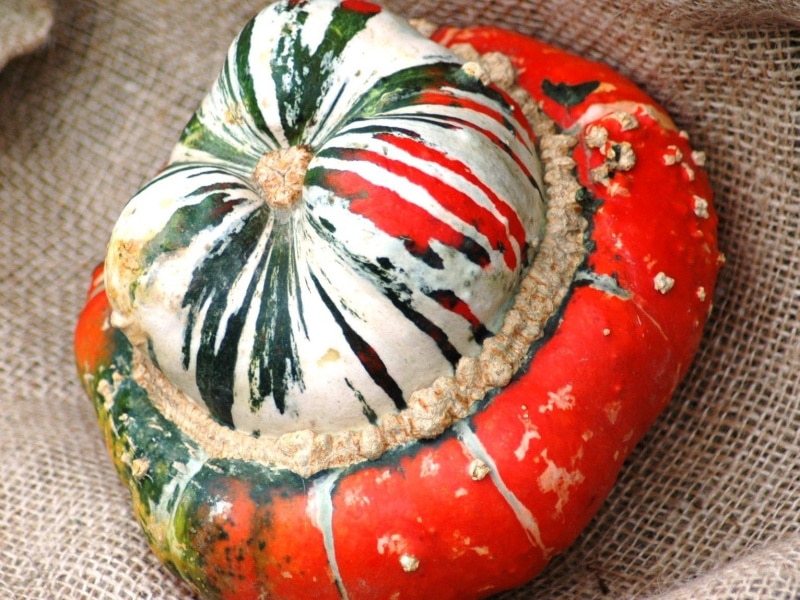
14. Turban Squash
It’s hard to mistake turban squash for another variety.
This decorative squash has a unique turban shape coupled with an eye-catching pattern.
The colors range from white to orange and the skin is bumpy.
While it may be a decorative squash, it sure is edible!
The flesh is mild, sweet, and nutty. It has the perfect flavor profile for a range of sweet to savory dishes.
Like many squash varieties, it’s best in soups and stews.
However, it’s not the easiest to prepare. Due to its shape and hard shell, it’s difficult to peel and cut.
I recommend separating the top from the bottom and working with it from there.
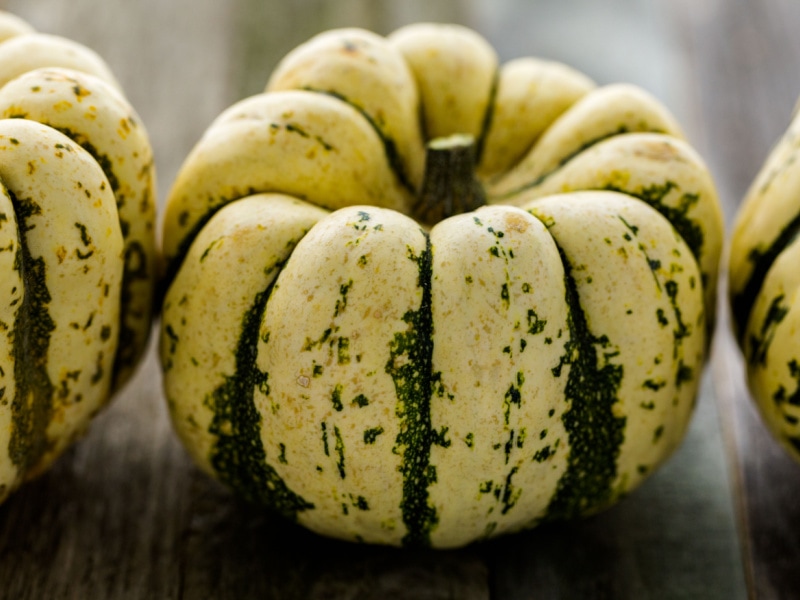
15. Sweet Dumpling Squash
Sweet dumpling squash is in the running for one of the cutest little squashes around.
It’s a small squash with a yellowish-white shell with green striations.
As the name suggests, it’s sweet. It’s also a little starchy, which is why some describe it as tasting like corn.
Due to its tiny size, it’s perfect for stuffing. It pairs particularly well with grains, cheese, nuts, and proteins.
When picking one out, make sure it’s firm and doesn’t have any soft spots.
Keep it in a cool, dry place and it will stay good for about 3 months.
Now that you know all about it, let’s start cooking squash!
